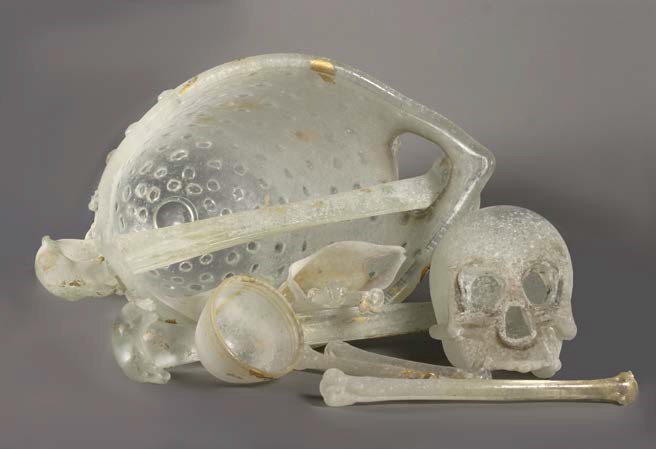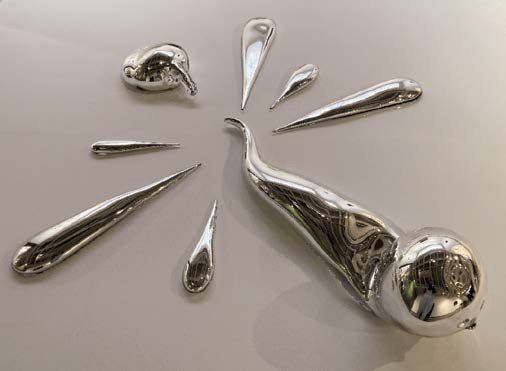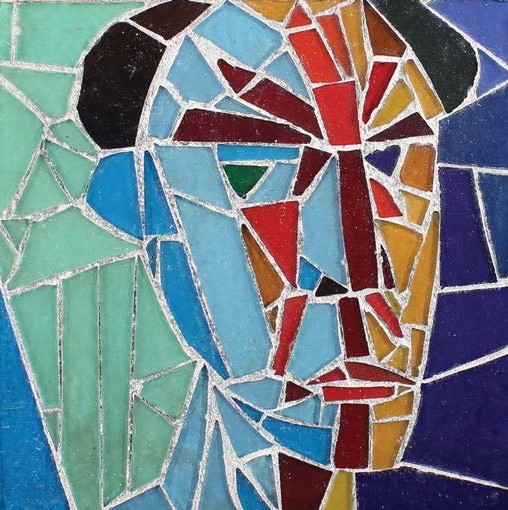The Nature of Glass: Reflecting an Artistic Tradition through Time

Once pigeonholed as a craft, glass art has enjoyed a growing audience during the past several decades among museums, scholars and collectors alike. The United Nations even declared 2022 as The Year of Glass.
Exhibitions—such as The Nature of Glass, on view at the New Mexico Museum of Art through December 31, 2023, and the recent Clearly Indigenous: Native Visions Reimagined in Glass at the Museum of Indian Arts and Culture—have helped shift this perception, making the medium more accessible to the public. As Matthew Kangas wrote in 1999 in Glass Magazine, “the paradox of glass art is the question of how such a traditional material can ever carry contemporary subject matter.”
In Santa Fe, glass as fine art dates to 1968 when the first glass works studio and gallery opened on Canyon Road. In 1974, renowned glass artist Dale Chihuly founded a glass studio at the
Institute of American Indian Arts. Appropriately, Chihuly's work is included in The Nature of Glass.
The museum has “a wonderful opportunity to share its collection of contemporary art glass, as well as work from significant glass collectors here in Santa Fe who have generously loaned pieces to the exhibition,” says Christian Waguespack, the museum’s head of curatorial affairs and curator of 20th century art.
According to Waguespack , the 28 works selected from the museum’s art glass collection represent fresh, innovative approaches to a medium that dates back more than 4,000 years to ancient Mesopotamia.
Among featured artists are Terri Greeves (Kiowa) and Preston Singletary (Tlingit), both of whom reimagine Indigenous motifs. Greeves reconceptualizes traditional beaded leather moccasins in her 2006 Yee Tah-lee, a pair of size 13 Converse high tops covered in beaded pop imagery. Singletary’s 1999 Wasco, reflects a mythical sea creature in a contemporary light.
Working in glass, says Singletary, “transforms the notion that Native artists are only best when traditional materials are used.”
The contemporary impulse married to traditional techniques is also seen in Robert Wilson’s Hotworked Glass, from 1994. Wilson, classically trained at the Corning Museum of Glass, later worked with Murano glass- makers in Italy, innovating the novel method of sculpting molten glass into a solid object while still in the furnace.
For his part, Mark Zippel pioneered kiln-fired glass. His starkly white, ovoid Polar Cap, from 2004, looks like an Artic ice cap. The work, he says, examines climate change in “a convergence between art and science.”
 Ginny Ruffner also embraces the continuum of life and science in her 1991 Eve and Pink Sticks. Here, she employs borosilicate glass, the kind of glass used to make scientific test tubes and beakers, to sculpt the biblical figure of Eve in a hyper-stylized Garden of Eden.
Ginny Ruffner also embraces the continuum of life and science in her 1991 Eve and Pink Sticks. Here, she employs borosilicate glass, the kind of glass used to make scientific test tubes and beakers, to sculpt the biblical figure of Eve in a hyper-stylized Garden of Eden.
In Artifact Still Life, from 1990, William Morris chemically treats his glass to create what looks like recently excavated, weathered “bones.” The work recalls life’s fragility, a kind of memento mori, a reminder of death’s inevitability.
Finally, in her 2001 work, I Feel Strange, Sylvia Levinson addresses her ever-timely concerns about rising authoritarian politics in Argentina. In her faceless portrait, a glass “blonde wig” floats untethered on the wall, recalling the tragedy of the disappeared, a theme that echoes far beyond Argentinian borders.
Private exhibition support for The Nature of Glass through the Museum of New Mexico Foundation is helping further the glass art movement in Santa Fe and beyond, says Waguespack.
“New Mexico has a robust community of glass artists and patrons,” he says. “We are excited for the chance to show that our museum is a place for these communities and this work.”
 What's New in the Collection
What's New in the Collection
Marc Quinn, one of the famed Young British Artists of the 1980s, explores the human form through surreal imagery and unconventional materials.
In Intuitive Morphology, a multipart sculpture of mirrored glass, recognizable body parts cast from Quinn’s own body are mixed with other biomorphic shapes, suggesting a human body dissolving into or forming out of mercury-like puddles.
Santa Fe contemporary art collector Bobbie Foshay donated Intuitive Morphology to the New Mexico Museum of Art, along with another 40 significant works. She also provided significant support for the Vladem Contemporary, including funding for the museum’s Window Box displays and for an LED light installation on the building’s façade by internationally renowned, Albuquerque- born artist Leo Villareal.
This article and image are from the Museum of New Mexico Foundation’s Member News Summer 2022.


Connect